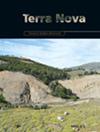Freshwater plume‐like condition near the north‐eastern coastal Arabian Sea during early Miocene: Evidence from the stable isotope record in the growth bands of gastropods (Turritella sp.)
IF 1.7
3区 地球科学
Q2 GEOSCIENCES, MULTIDISCIPLINARY
引用次数: 0
Abstract
The Early Miocene witnessed major tectonic, palaeoceanographic and climatological reorganizations over the Asian realm. The Himalayan and Tibetan plateau upliftment influenced monsoon intensity during this age. Contemporary high‐resolution tropical hydroclimate records are limited. Here, we present an early Miocene sub‐annual stable isotope record from the growth bands of well‐preserved中新世早期阿拉伯海东北海岸附近的淡水羽状状态:腹足类(Turritella sp.)生长带的稳定同位素记录证据
早中新世见证了亚洲地区重大的构造、古海洋学和气候学重组。喜马拉雅山和青藏高原的隆起影响了这一时期的季风强度。当代高分辨率的热带水文气候记录十分有限。在此,我们从印度西部卡奇盆地保存完好的Turritella sp.的生长带中获得了早中新世次年稳定同位素记录。其δ13C和δ18O的变化率分别为-4.83‰至-1.80‰和-7.06‰至-2.66‰(以VPDB计)。传统的氧同位素温度测定法显示温度季节性明显,从 9.3°到 28.1°C。将目前的早中新世δ18O 记录与印度洋沿岸-河口环境碳酸盐岩中的现代δ18O 记录进行比较,证实早中新世期间有大量淡水流入阿拉伯海东北部,这与在沿岸地区观测到的现代淡水羽流事件类似。
本文章由计算机程序翻译,如有差异,请以英文原文为准。
求助全文
约1分钟内获得全文
求助全文
来源期刊

Terra Nova
地学-地球科学综合
CiteScore
4.80
自引率
8.30%
发文量
59
审稿时长
2.3 months
期刊介绍:
Terra Nova publishes short, innovative and provocative papers of interest to a wide readership and covering the broadest spectrum of the Solid Earth and Planetary Sciences. Terra Nova encompasses geology, geophysics and geochemistry, and extends to the fluid envelopes (atmosphere, ocean, environment) whenever coupling with the Solid Earth is involved.
 求助内容:
求助内容: 应助结果提醒方式:
应助结果提醒方式:


